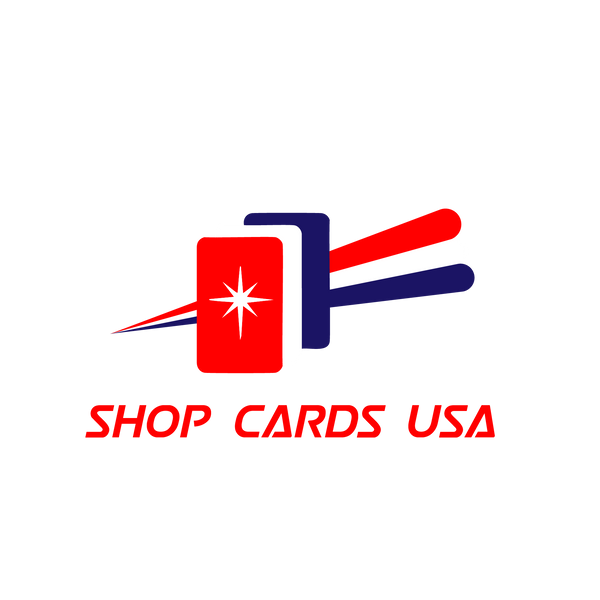
Why Trading Card Games Are Taking North America by Storm
Trading card games (TCGs) like Pokémon, One Piece, Union Arena, Gundam and Lorcana are experiencing a massive wave of popularity in North America. From nostalgic collectors to competitive players and newcomers, the TCG community is expanding rapidly. But what’s driving this surge? And how has the trading card phenomenon evolved over the years?
This blog explores the explosive growth of TCGs and dives into how these collectibles have become both a hobby and a lifestyle. Whether you’re a veteran collector or curious about the world of trading cards, you’ll find plenty to learn here.
The Evolution of Trading Card Games
Trading card games first emerged in the 1990s with the historic release of Magic: The Gathering—a game that combined strategy, lore, and collectible cards. From this foundation, other iconic TCGs like Pokémon followed, adding gameplay that appealed to younger generations.
By the early 2000s, TCGs expanded beyond a niche audience, gaining mainstream success. Franchises like Yu-Gi-Oh! exploded in popularity, fueled by accompanying animes, movies, and video games. Pokémon, in particular, became a global obsession, with cards reaching every corner of the globe. Rare editions like the Pokémon 1st Edition Charizard rose as collectibles, with some fetching hundreds of thousands of dollars in secondary markets.
Today, the TCG world continues to evolve, featuring new players like One Piece Trading Card Game—a hit based on the beloved manga—and Lorcana, a Disney-themed card game targeting family-friendly audiences. These modern TCGs combine nostalgia with fresh mechanics, drawing both old fans and new enthusiasts.
How Digitalization Has Revolutionized TCGs
The digital age has also reshaped the world of TCGs. Online platforms like TCGplayer and apps like Pokémon TCG Online now allow players to connect globally, trade cards virtually, and even participate in online tournaments. This digital transformation has brought new accessibility to the TCG world while simultaneously boosting the excitement surrounding physical cards.
Interestingly, digitalization hasn’t diminished physical card sales. On the contrary, it has enhanced the market. Players frequently discover digital TCG platforms first, then venture to buy physical decks and join local game stores to duel face-to-face.
Whether it’s scanning QR codes embedded in physical cards or using virtual marketplaces to purchase rare collectibles, digital tools continue to enrich how we interact with TCGs.
Building a Community Through TCG Events
One of the TCG world’s most compelling aspects is its sense of community. Local game stores (LGS) across North America serve as hubs for fans. These stores host tournaments, meetups, and demo nights where players can learn, trade, and compete.
Franchises like Pokémon frequently host large-scale events, such as the Pokémon World Championships, uniting players from all over the globe. Similarly, the introduction of games like One Piece Trading Card Game has brought manga fans together, creating new sub-communities within the overarching TCG world.
This human connection is what makes TCGs unique. Beyond gaming, trading cards encourage players to collaborate, strategize, and form friendships—key components in building meaningful social interactions.
The Economic and Social Impacts of TCGs
From an economic standpoint, TCGs have evolved into a multi-billion-dollar industry. The secondary market for rare cards, in particular, has seen skyrocketing prices. For instance, Pokémon collectibles regularly make headlines when vintage sets or rare cards sell for thousands of dollars at auction.
Retailers and local game stores also benefit, with TCGs generating consistent demand not just for cards, but also for complementary merchandise like card sleeves, binders, and playmats. Additionally, streaming platforms like Twitch and YouTube host countless channels dedicated to unpacking TCG booster packs, with content creators cashing in on the trend.
On the social side, TCG players sharpen various skills, including strategic thinking, budgeting, and interpersonal communication. These games bridge generational gaps, allowing parents who once played Pokémon in their youth to teach their children the game—or even learn modern TCGs like Lorcana together.
What’s Next for Trading Card Games?
While the current TCG boom shows no signs of slowing, what does the future hold? Experts predict we’ll see even more innovation in this space. Potential trends include:
- Crossover TCGs featuring collaborations between popular franchises, such as Marvel or DC.
- Sustainable Card Printing ensuring cards are produced with eco-friendly materials.
- Augmented Reality (AR) integration, where players use AR devices to simulate battles and uncover hidden card mechanics.
Additionally, established brands like Pokémon continually innovate to keep their community engaged. Features like holographic cards and limited-edition sets keep players eager, and new entrants like One Piece Trading Cards ensure continual growth in the market.
Start Your TCG Journey
Trading Card Games are no longer just for kids or hobbyists—they’re cultural phenomena connecting communities, building lasting skills, and even driving economic growth. Whether you're a collector chasing Pokémon collectibles or a One Piece Trading Cards fan looking to build the ultimate deck, there’s a place for you in the TCG world.
Now it's your turn—what’s your favorite trading card game, and why? Share your story in the comments, and connect with other enthusiasts to keep the conversation going!
